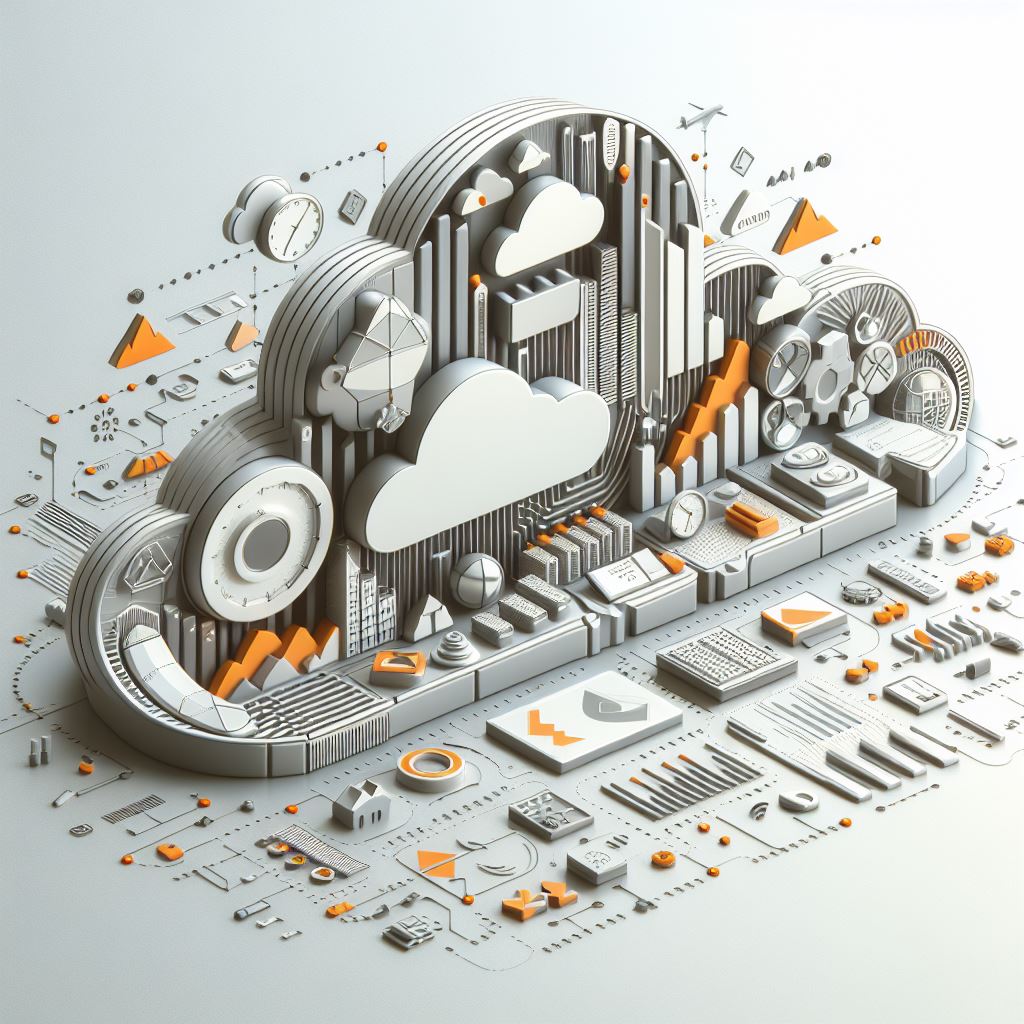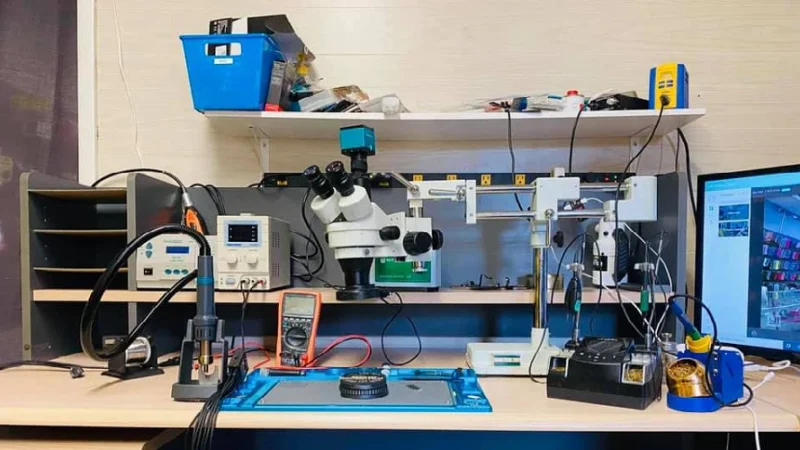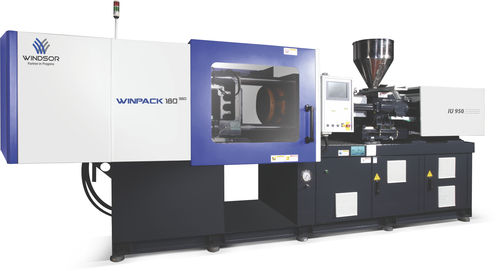What Future Developments Can We Expect in AWS Cloud Trends?

As the undisputed leader in cloud computing, Amazon Web Services (AWS) has revolutionized how businesses operate. Its vast network of services empowers organizations of all sizes to leverage scalable, on-demand computing power. However, the cloud landscape is constantly evolving, driven by ever-advancing technologies and the ever-changing needs of users. In this dynamic environment, what future developments can we expect in AWS cloud trends?
This article explores the exciting possibilities that lie ahead, focusing on AWS’s continued investment in cutting-edge solutions like Artificial Intelligence and the Internet of Things, alongside advancements in its core services like automation and compute infrastructure. We’ll also delve into the growing importance of hybrid and edge computing solutions, as well as AWS’s commitment to sustainable practices. By examining these trends, we can gain valuable insights into the future of cloud computing and AWS’s continued dominance in this ever-expanding market.
Continued Focus on Emerging Technologies
Artificial Intelligence and Machine Learning (AI/ML)
AI and ML are rapidly transforming cloud solutions, enabling businesses to automate tasks, gain deeper insights from data, and even develop intelligent applications. This technology empowers businesses to:
- Automate complex processes: AI can handle repetitive tasks, freeing human resources for more strategic work.
- Make data-driven decisions: ML algorithms can analyze vast amounts of data to identify patterns and trends, leading to better decision-making.
- Develop intelligent applications: Cloud-based AI/ML tools allow businesses to build applications that can learn and adapt over time, like chatbots and recommendation engines.
AWS is already a major player in the AI/ML space, offering services like Amazon SageMaker, a platform that streamlines the development and deployment of machine learning models. Looking ahead, we can expect further advancements in user-friendliness. Imagine drag-and-drop interfaces or even voice-based commands for building ML models, making this powerful technology accessible to a wider range of users, not just data scientists.
Internet of Things (IoT)
The Internet of Things (IoT) refers to the ever-growing network of physical devices embedded with sensors and software, allowing them to collect and transmit data. This data is often sent to the cloud for storage, analysis, and use in various applications. Cloud computing plays a critical role in IoT by providing the infrastructure to handle the massive amount of data generated by these devices.
AWS offers several services specifically designed for the IoT world, such as AWS IoT SiteWise. SiteWise simplifies the process of collecting, organizing, and analyzing data from industrial equipment and other connected devices. As the number of IoT devices continues to explode, we can expect even more sophisticated solutions from AWS for managing and integrating this vast data.
Imagine real-time dashboards that provide insights from millions of devices simultaneously or automated actions triggered by specific data patterns. The future of IoT and cloud computing promises a world where physical devices seamlessly communicate and collaborate, creating an interconnected ecosystem that drives efficiency and innovation.
Increased Automation
Managing cloud infrastructure can be a complex and time-consuming task. Thankfully, automation offers a powerful solution, streamlining processes and freeing up IT resources. Here’s how automation benefits cloud management:
- Reduced human error: Automating repetitive tasks like provisioning servers and applying security patches minimizes the risk of errors caused by manual intervention.
- Increased efficiency: Automating workflows can significantly reduce the time it takes to complete tasks, allowing IT teams to focus on more strategic initiatives.
- Improved scalability: Automation allows for resources to be automatically scaled up or down based on demand, optimizing costs and ensuring peak performance.
Looking ahead, AWS is likely to further integrate automation features across its services. Imagine automated configuration management tools that ensure all resources adhere to best practices, or self-healing infrastructure that automatically detects and corrects issues. However, with increased automation comes the potential for user concerns. Over-reliance on automation could lead to a lack of understanding of underlying systems, making troubleshooting more difficult. The key will be striking a balance between automation’s efficiency and the need for human oversight.
Improved Compute Infrastructure
The foundation of any cloud service is its compute infrastructure, which refers to virtualized computing resources like processing power, storage, and memory. AWS offers a variety of computing services, such as EC2 (Elastic Compute Cloud) which provides on-demand virtual machines, and Lambda, a serverless compute service that eliminates the need for server management.
Looking ahead, we can expect AWS to enhance its existing compute offerings in several ways:
- Next-generation hardware: Continued investment in cutting-edge processors and memory technologies will lead to even faster and more powerful compute instances.
- Improved scalability: AWS might develop even more granular scaling options, allowing users to scale resources precisely to meet their needs.
- Auto-optimization: Imagine intelligent systems that can automatically adjust computing resources based on real-time usage patterns, optimizing cost and performance.
Beyond these general improvements, we might also see the emergence of specialized computing solutions tailored to specific industries. For example, high-performance computing instances optimized for scientific simulations, or machine learning-focused hardware designed to accelerate AI workloads. By catering to these specialized needs, AWS can further solidify its position as the go-to platform for a diverse range of cloud computing requirements.
Emphasis on Hybrid and Edge Computing Solutions
The cloud isn’t a one-size-fits-all solution. Some businesses require on-premises infrastructure for security, compliance, or latency reasons. This is where hybrid and edge computing come in.
- Hybrid computing: Combines on-premises infrastructure with cloud resources, allowing businesses to leverage the benefits of both.
- Edge computing: Processes data closer to its source, at the “edge” of the network, for ultra-low latency and reduced reliance on central cloud servers.
AWS recognizes the growing demand for these solutions. They offer services like AWS Storage Gateway, which seamlessly integrates on-premises storage with cloud storage, and Outposts, which brings pre-configured AWS infrastructure to customer data centers.
The future of hybrid and edge computing is bright. With increasing data volumes and the rise of real-time applications, these solutions offer a compelling alternative for businesses that need a balance between flexibility, security, and performance. We can expect AWS to further refine its hybrid and edge offerings, making it easier for businesses to deploy and manage these complex environments. Imagine a future where hybrid and edge seamlessly integrate with the cloud, creating a truly distributed computing landscape.
Growing Focus on Sustainability
As environmental awareness rises, businesses are increasingly seeking eco-friendly solutions, and cloud computing is no exception. Companies are scrutinizing the environmental impact of their cloud providers, making sustainability a key differentiator.
AWS is at the forefront of this movement, demonstrating a strong commitment to sustainability initiatives. One prominent example is their pledge to achieve net-zero carbon emissions by 2040. They’re actively investing in renewable energy sources to power their data centers and are constantly innovating to reduce their environmental footprint.
Looking ahead, we can expect even more advancements in energy-efficient cloud infrastructure. Imagine data centers utilizing innovative cooling technologies or powered by on-site renewable energy generation. AWS might also develop tools for customers to track and optimize their cloud workloads for sustainability, helping them minimize their environmental impact. By prioritizing sustainability, AWS can not only reduce its own environmental footprint but also empower its customers to do the same, solidifying its position as a leader in responsible cloud computing.
Conclusion
The future of AWS is brimming with innovation. From the continued integration of AI/ML and IoT to advancements in core services and a growing focus on sustainability, AWS is constantly pushing the boundaries of cloud computing. These developments hold immense potential for businesses considering AWS cloud migration benefits. By embracing these future-proof solutions, businesses can unlock greater scalability, agility, and efficiency, ultimately gaining a competitive edge in the ever-evolving technological landscape. With its unwavering commitment to innovation and sustainability, AWS is poised to remain the leader in cloud technology for years to come.





